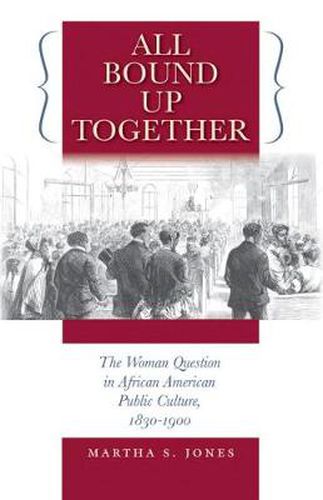Readings Newsletter
Become a Readings Member to make your shopping experience even easier.
Sign in or sign up for free!
You’re not far away from qualifying for FREE standard shipping within Australia
You’ve qualified for FREE standard shipping within Australia
The cart is loading…






The place of women’s rights in African American public culture has been an enduring question, one that has long engaged activists, commentators, and scholars.
All Bound Up Together
explores the roles black women played in their communities’ social movements and the consequences of elevating women into positions of visibility and leadership. Martha Jones reveals how, through the nineteenth century, the
woman question
was at the core of movements against slavery and for civil rights. Unlike white women activists, who often created their own institutions separate from men, black women, Jones explains, often organized within already existing institutions - churches, political organizations, mutual aid societies, and schools. Covering three generations of black women activists, Jones demonstrates that their approach was not unanimous or monolithic but changed over time and took a variety of forms, from a woman’s right to control her body to her right to vote. Through a far-ranging look at politics, church, and social life, Jones demonstrates how women have helped shape the course of black public culture.
$9.00 standard shipping within Australia
FREE standard shipping within Australia for orders over $100.00
Express & International shipping calculated at checkout
The place of women’s rights in African American public culture has been an enduring question, one that has long engaged activists, commentators, and scholars.
All Bound Up Together
explores the roles black women played in their communities’ social movements and the consequences of elevating women into positions of visibility and leadership. Martha Jones reveals how, through the nineteenth century, the
woman question
was at the core of movements against slavery and for civil rights. Unlike white women activists, who often created their own institutions separate from men, black women, Jones explains, often organized within already existing institutions - churches, political organizations, mutual aid societies, and schools. Covering three generations of black women activists, Jones demonstrates that their approach was not unanimous or monolithic but changed over time and took a variety of forms, from a woman’s right to control her body to her right to vote. Through a far-ranging look at politics, church, and social life, Jones demonstrates how women have helped shape the course of black public culture.